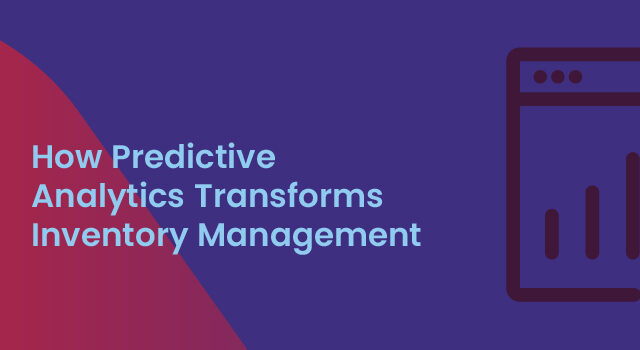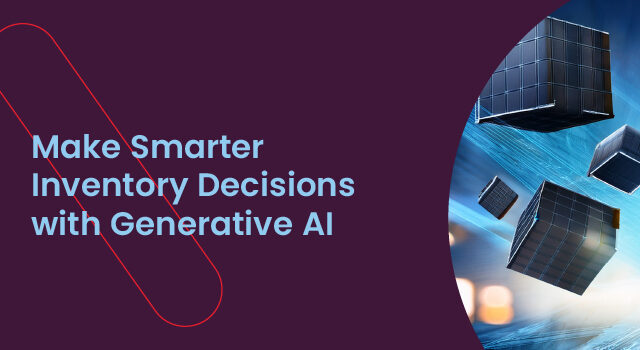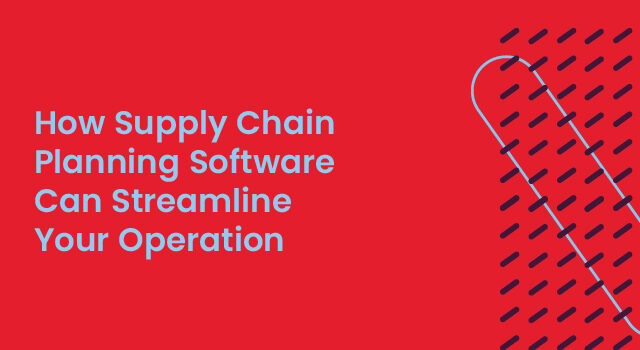Accurate stock forecasting forms the basis for efficient supply chain management. Accurate forecasts ensure that you have stock when customers need it without carrying excess inventory. Inventory carrying costs come down, operational efficiency improves, and profits will rise.
Nowadays, you can harness the power of machine learning (ML) to ensure more accurate stock forecasting. Let’s discover the benefits of machine learning and find out how to select and install the best software for your business.
The need for improved stock forecasting
Your business needs an accurate forecast to maintain a balanced inventory. Benefits include reduced stockholding and lower inventory expediting costs. Balanced inventories also greatly reduce risks associated with stock-outs.
Traditional forecast assumptions and failures
Traditional forecasting relies heavily on historical data and linear models. Linear models assume that future demand will follow past patterns. These models often fail to account for complex variables such as sudden demand changes, seasonality, promotions, and supply chain disruptions. This leaves your business open to forecast inaccuracies when market conditions are rapidly changing.
Conventional forecasting uses past trends to predict future demand but can tend to overlook external factors like economic changes, competitor actions, and social trends.
Inaccurate forecast effects
If your business relies on inaccurate forecasts, you can expect one of two outcomes. If demand is higher than expected, you risk losing sales. If it is lower, you will accumulate excess inventories. Both situations carry financial penalties:
- Stock-outs: If you run out of stock, you miss sales opportunities, disappointing your customers. Customers may turn to your competitors for stock. If you run out of stock often enough, your business reputation will suffer.
- Overstocking: Excess stock ties up valuable capital. It increases warehousing costs and can lead to spoilage and obsolescence. Stock excesses can drive up costs, especially for perishable end products. You may have to sell excess inventory at a discount, cutting profit margins.
- Increased operational costs: Both overstocking and stockouts contribute to increased operational costs. These may result from rushed shipping fees for stockouts or storage costs for surplus items.
Advantages of Machine Learning in stock forecasting
Machine learning (ML) improves forecasting accuracy by overcoming the limitations of traditional methods. Here are some key advantages of Machine learning models:
- Complex pattern recognition: These models can recognize complex patterns that traditional models often miss. These systems can analyze many variables, like sales trends, lead times, and external factors like economic conditions.
- Vast dataset analysis: They excel at processing and analyzing vast amounts of data. They can include many diverse datasets, like customer behavior and weather patterns. The systems use the analysis to unravel and predict demand fluctuations.
- Increased objectivity: Humans are often influenced by intentional or unconscious bias. Machine learning is objective, cutting the potential for human error and emotional influence. Forecasts produced using this technology are more reliable and accurate, free from the subjective judgment that can lead to poor inventory decisions.
- Adaptability and continuous improvement: They learn continuously from new data. As market conditions change or new trends emerge, ML models change the forecasts to reflect the latest data. Forecasts remain relevant and accurate. As the models process more data, they produce increasingly more accurate forecasts.
Implementing Machine Learning for Stock Forecasting
Your business needs a structured ML approach and here are a few steps to consider:
Data Collection and Preparation
Quality data forms the basis of successful ML implementation and use. The required information includes:
- Historical sales data: Use past sales performance and trends along with inventory levels.
- External factors: Include information about external factors like holidays, promotions, and the weather. The model uses this information to draw non-linear conclusions.
- Data cleaning: Involves finding missing variables, standardizing data, and cutting outliers that could unduly influence predictions.
Model selection and training
Model selection depends on your business and the problems you want to solve. Start with simple models, like linear regression or decision trees. They are easy to understand and implement and can provide solid foundational information.
If the results aren’t accurate enough, move on to more complex models like neural networks or support vector machines.
Test your chosen model using your data, and adjust the model by fine-tuning or trying a different algorithm.
Make sure that you can integrate the ML with your existing systems. It must be scalable and grow with your business.
Use training data to train the model by feeding the data into the algorithm. It will learn patterns and relationships between the input variables and the output.
After training, test the model using the test set. The model will make predictions based on this unseen data, and you’ll compare these predictions to the actual outcomes to see how well it performs.
Use metrics like accuracy and recall to measure your model’s performance. If it doesn’t perform well, adjust features by adding, deleting, or changing variables.
Once the model performs well, you can deploy it into a live environment to forecast in real time. Continuously monitor the ML performance and retrain it periodically with new data to keep it accurate.
Once deployed, continually validate ML performance. Constant validation and enhancements will ensure continued improvement.
Practical considerations and best practices
When implementing machine learning, several practical considerations and best practices can help streamline the process. Start simple, focus on critical data points, and ensure that the new technology integrates smoothly with your existing systems.
Begin with basic models and gradually increase complexity. Start by experimenting with simpler models, such as linear regression or decision trees. This approach will help you understand the process and build your confidence. As you become familiar with how the system identifies the variables that affect forecasts, you can introduce more advanced models. This step-by-step method reduces the risk of errors and facilitates smoother integration of machine learning.
Be mindful of outliers and anomalies, as they can significantly distort forecasts, leading to unusual demand spikes or unexpected disruptions in the supply chain. By addressing these anomalies, you can achieve more accurate predictions.
For machine learning to provide maximum value, it must integrate with your existing systems. This integration enables real-time data flow, ensuring that your machine learning models are always up to date. It also aligns business functions, allowing everyone to work from the same database.
For a detailed guide on demand planning improvements, refer to Demand Forecasting for Supply Chains: How to Predict & Plan.
Give your business the best chance of success
Technology-driven software that leverages advances in AI and machine learning gives your business the best chance for success. These systems simplify complex processes and effectively manage the numerous variables that complicate supply chain management.




